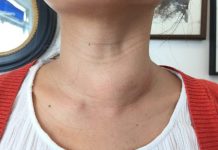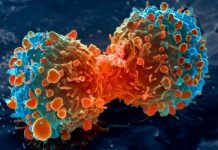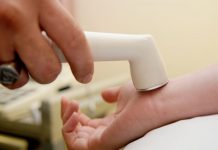 Most people may develop at some point cell growths that do not possess the malignant characteristics of a cancer. These are known as benign tumors.
Most people may develop at some point cell growths that do not possess the malignant characteristics of a cancer. These are known as benign tumors.
They do not develop in a rapid and uncontrolled manner; neither do they invade other tissues nor spread from one body organ to another.
Benign tumors are usually harmless to a person’s health, although they may affect the function of involved body organs just by their presence.
Thyroid nodules are benign tumors or lumps found within the thyroid gland, which is located at the base of the neck.
There are no known symptoms and causes, although lack of iodine in the diet or radiation treatments for a child’s head or neck area may sometimes play a role in thyroid nodule formation.
Nodules may be discovered during a routine physical exam, or detected through imaging tests in the head or neck. In some cases, the nodules can cause too much thyroxine (the thyroid hormone) to be produced, resulting in hyperthyroidism.
Treatment for thyroid nodules may range from careful monitoring to the ingestion of radioactive iodine to shrink growing nodules or thyroidectomy to remove extra-large nodules that makes breathing or swallowing difficult for the patient.
Sebaceous or epidermoid cysts are small, benign growths that most often occur just beneath the skin on the face, neck, and torso and occasionally in the genitals.
The cysts are usually white or yellow, and may be smaller than a quarter inch or as large as 2 inches in diameter. Epidermoid cysts are formed when a hair follicle is damaged and blocked by new cells, or an oil gland ruptures.
An epidermoid cyst is usually left alone, but infections may occur. In that case, surgery may be done to cut and drain or remove the cyst. To prevent scarring, minimal excision or a laser may be used on the cyst.
Keloids are benign growths that occur when there is an overgrowth of collagen in scar tissue. They usually develop at the site of an injury, no matter how small the injury may be. They can be firm and rubbery lesions or shiny and fibrous nodules; color can vary from pink to flesh or red to dark brown.
Itching, sharp pains and changes in texture usually accompany the occurrence of a keloid scar. Keloids can increase in size in a claw-like manner over normal skin; when they become infected, ulcers appear.
Complete removal of the scar tissue by surgery or other means is the only treatment for keloids. However, the risk that a keloid will recur on surgical scar tissue is more than 50%.
Other treatments are non-invasive, but do not offer 100% effectiveness. Some involve allium cepa or other natural substances, while others involve steroid injections or laser or radiation therapy.















